Sewing - introduction
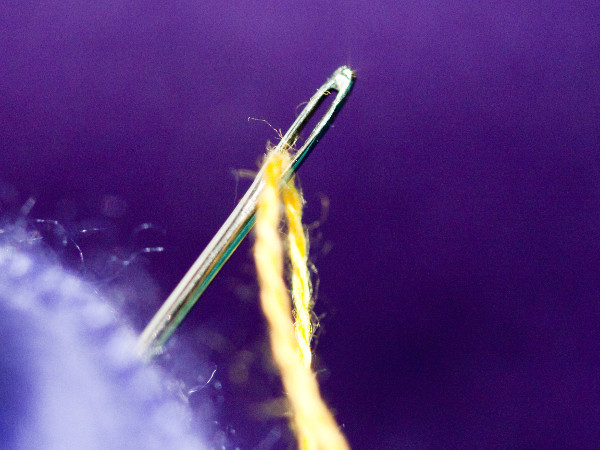
Pic: Bindhaas Madhavi, CC BY-NC-ND 2.0
“If you want handmade to be part of your regular lifestyle, make some stuff you’re actually going to wear on a daily basis” – Tilly Walnes
Contents
What is sewing?
It’s binding textiles and fabrics together with a needle and thread – either by hand or with a sewing machine. There are several kinds of basic stitches – some are practical for attaching material, and some are for decorative embroidery.

Practical stitches include:
- running stitch: the most basic ‘in and out’ stitch
- backstitch: for attaching things together strongly
- tacking stitch: used for holding material in place when preparing to attach
- slip stitch or invisible stitch: for doing hems or attaching a lining to a coat etc.
- overstitch or overcast: used together with running stitch to stop the edges of scrap fabrics from fraying when doing patchwork or quilting

Cross-stitches and others are used for more decorative work such as embroidery and tapestries, including words and pictures.
Machine sewing is faster and stronger than hand sewing. A sewing machine has a bobbin which creates an underthread and a top spool of cotton which creates a top row of stitches, and the two interlock to provide a strong join. Modern machines can do decorative stitches too.
The origins of sewing are lost in prehistory, but it is one of humanity’s oldest skills, predating textiles. Stone-age people sewed together animals skins using bone needles and threads made from animal sinew or gut.

What are the benefits of sewing?
Sewing is an extremely useful skill that can allow you to make, repair and revamp clothes and household items, saving money and reducing waste and resource use. It also allows you to produce garments that are individual, personal and unique.
A few generations ago, most people would have known how to sew. Clothes were well-made, repaired, and could last a lifetime. Perhaps that’s why there’s such interest in vintage clothing – it’s usually high-quality and has stood the test of time.
The fashion industry has created more seasons, to try to persuade people to give them their money more often, and throw away perfectly wearable clothes because they’re not in fashion any more. Now there’s a movement of conscious young people who want to wear clothes that look good, but who don’t want to buy into the corporate idea of what fashion is. They’d rather make something unique, timeless and durable than dress like a clone in expensive but poor-quality brands.
Sewing can improve well-being. To work at a process from start to finish, and produce something tangible, and functional for everyday use can be very therapeutic. Making and repairing clothes can build confidence and be empowering – you can do things for yourself and you don’t have to rely on large brands to provide the basics in life, like clothing.
There’s also the social aspect – sewing in groups or with friends and family members can bring together people of different ages, and from all walks of life; and shared activities like sewing can help people relax and open up.

There’s a movement called Craftivism, combining crafts (predominantly sewing and knitting) and activism to promote change. For example the Craftivist Collective combines a growing project making jams with a sewing element – cross-stitching a message on the lid covers for the jars, supporting Oxfam or Fair Trade campaigns.
Sewing by hand uses no electricity – but you can also use a treadle or hand-winding sewing machine.
It’s fun.
What can I do?
Here’s a free beginners’ sewing course and here’s a bank of techniques covering both machine and hand sewing. Search online for specific things you want to learn – there’s a mountain of free information, guides and videos out there.
First you have to get some practical experience – so ask family members to show you, attend a course and/or join a local group – try your local community centre, WI (although don’t be intimidated if you’re a man; this is the 21st century – women can build houses, men can sew), search online for the name of your town plus sewing groups or craft clubs. You can get needles and cotton from your local sewing / sewing supplies / fabric shop, and you can ask if they have classes at the same time. Ask family members if they have stashes of fabric or old dresses etc. for you to work on. The older generation can be a mine of useful information, and they might be very happy to have the opportunity to pass on skills.

When it comes to getting yourself a sewing machine, you really have to use it first to see if it suits you. So it’s either a case of finding someone to let you have a go on their machine, or attending a course where you can try different machines. If you’re buying a new machine, check that it’s strong and sturdy – it should be an investment for life. A ‘bargain’ new machine may be broken in a year’s time. It’s best to invest in something that’s going to last.
Different machines are able to do a range of different stitches. After talking to people and/or attending courses, work out the kinds of things you want to do, and make sure the machine you choose can do them. Older, mechanical machines have a dial for different stitch settings, and more modern, computerised machines have digital controls, and they often seem smoother and stronger.

You can often find old treadle machines on eBay, at car boot sales, in attics or charity shops. They can be quite cheap, so you can have a go and see if they work for you. A second-hand machine often won’t come with an instruction manual, so you need to have a bit more confidence that you’ll know how to thread and use it. Older machines will appeal to people who like to tinker – but try to use it first, to see if there’s anything wrong; but even then, it’s probably repairable – search for your local sewing machine repair specialists, or ask in a fabrics shop. You may be able to share a friend’s machine, in which case you won’t need to buy one at all. Or of course you could just sew by hand – but it will be much slower. You can certainly hand-darn holes in socks or jumpers – darning is basically sewing with wool – weaving together threads to fill the hole.
When you’re ready to start making things, don’t be frightened – just have a go. You can start with ‘revamping’, which is becoming very popular, and you’ll learn very quickly. You don’t need all the latest equipment, but apart from a sewing machine, what you probably do need are:
- good, strong pair of scissors
- tape measure
- pins
- tailor’s chalk (can mark fabric and it rubs off without staining)
- good quality thread that doesn’t snap easily when you pull it
- some general purpose needles
- cross-stitch needles if you’re doing embroidery, which tend to have a bigger eye and a more rounded end
- darning needles with large eyes for wool
- thimble (maybe)
You can often find boxes at boot sales full of this kind of stuff, very cheaply.
Visit the Knitting and Stitching Show in Harrogate, London or Dublin. It’s a big melting pot for the sewing and textiles community, with workshops, information and inspiration.

photo: DIY Couture.
Most importantly, let’s not let the big clothing brands tell us what’s important. We can invent and revamp and decide what we want ourselves. It’s difficult to break free though, and most of us listen to the fashion industry to some extent. They spend a lot of advertising money trying to get people to sneer at the hand-made and telling us what’s cool. Let’s try to make branded gear uncool. So don’t forget to show people what you’ve made or revamped – let’s spread the word.


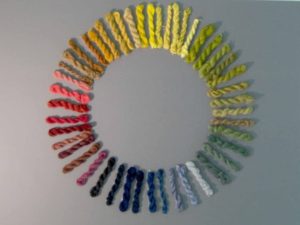
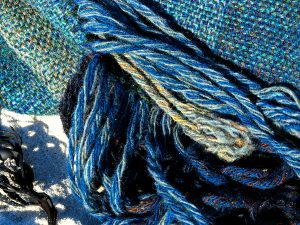
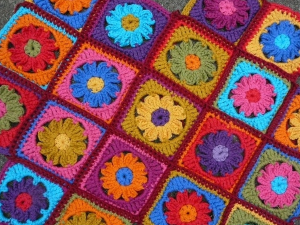
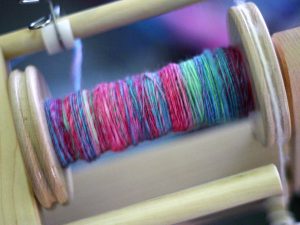
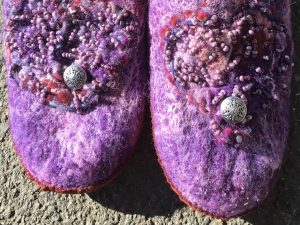
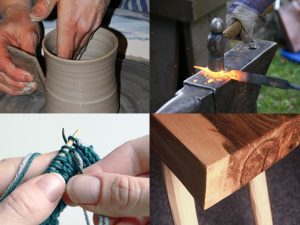
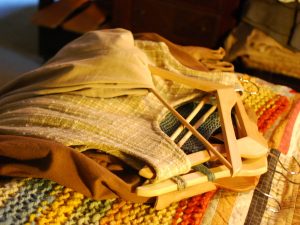
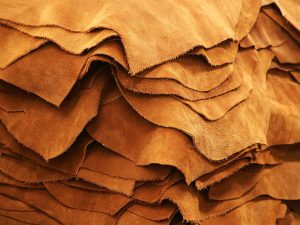

2 Comments
This is indeed the best article I have seen on sewing in a long time. As you described it so well lots of many positive aspects can be found in sewing… sadly such a very useful & creative activity is generally very seldom spoken about or introduced.
Very happy to find your site just now, I’ve been thinking about staring a sewing group, motivated by a wish for slow living, and an awareness that many people wish to learn skills. Am intending to contact Partneriaeth Ogwen to ask for a space with good, natural light. I am not aware that a group already exists, but shall see…..